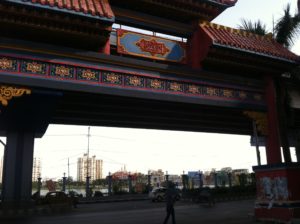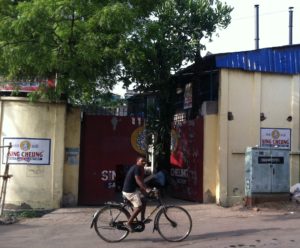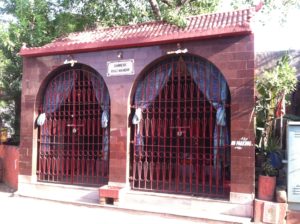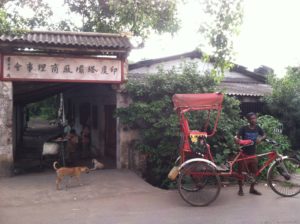By DOUGLAS PIZA, 7/11/2016. My last post before flying to India was about the Chinese Indian cuisine in New York. Of course after arriving in Kolkata food was also part of my research.
In my first visit to Tangra, I went to a restaurant owned by a Chinese Indian. I didn’t chose it randomly, though I could certainly do so given that there are so many different restaurants in that neighborhood. Rather I was recommended to go there by the owner of New York’s Tangra restaurant.

The area has been a hub of the Chinese Indian entrepreneurs. There one finds a few tannery shops that remain open, other kinds of leather treatment businesses, and more and more restaurants. Besides, the area is gentrifying fast: lots of new residential and commercial buildings are under construction.
In regards to my research, the most interesting aspect of the recent transformations in Tangra area is this: many tannery owners shut down their establishments to open restaurants. With a small Chinese community, these businesspeople aim at Kolkata residents and tourists. Except for weekends or Chinese holidays, when more than a few Chinese Indians can be spotted around the tables, clients and staff are mainly comprised of non-Chinese Indians.
But there is more about Chinese food in Tangra than restaurants. India’s well-known Sing Cheung sauce factory has been located there since years – while the Pou Chong sauce factory, one of the sponsors of the Dragon Boat Race, is located in Tiretta Bazaar.

And there is more about Chinese culture in Tangra than food. The neighborhood houses the Chinese Kali temple – Kali is a Hindu deity. The Chinese cemetery is also located there. Until recently, a Chinese school there used to offer Indian government-approved middle school education, but nowadays only operates for martial arts and Chinese language classes (the facility is also leased out).

While it is hard to deny the fact that the community has been decreasing, the newspaper continues to operate – and anyone can enjoy a conversation with the editor and the staff in the mornings. Regardless its size, the resilience of the newspaper is another sign of the community’s strength.

When I go back to New York, the Chinese Indian food shall have a different taste: with lots of good memories, and with a wider significance.
